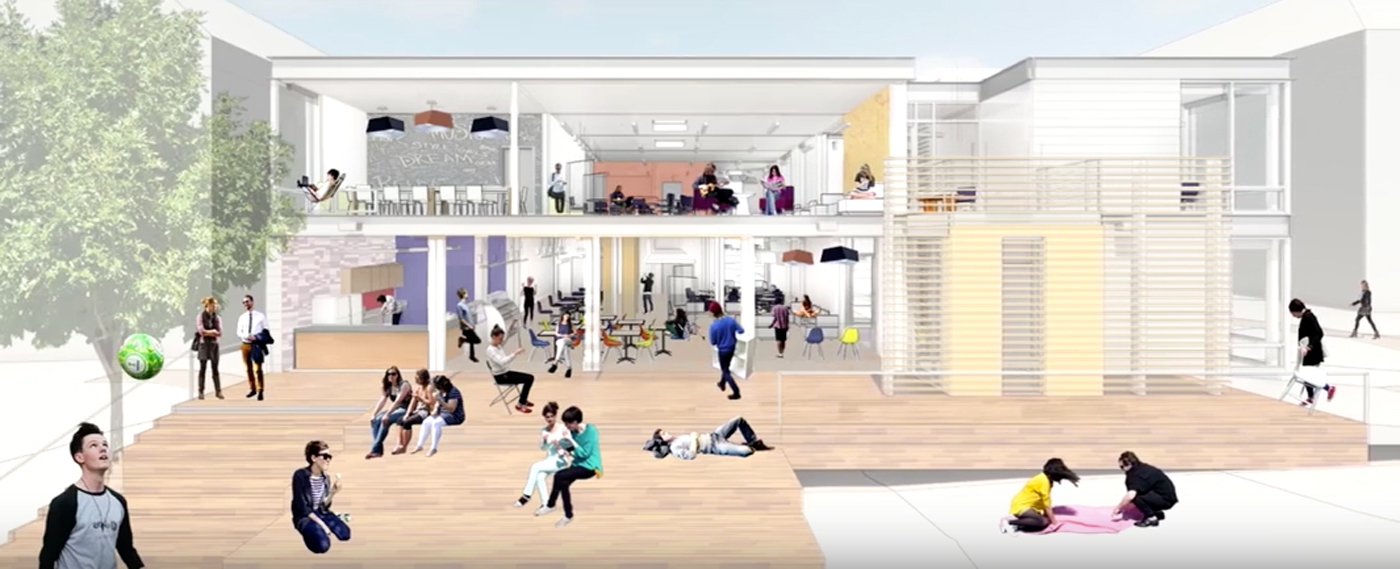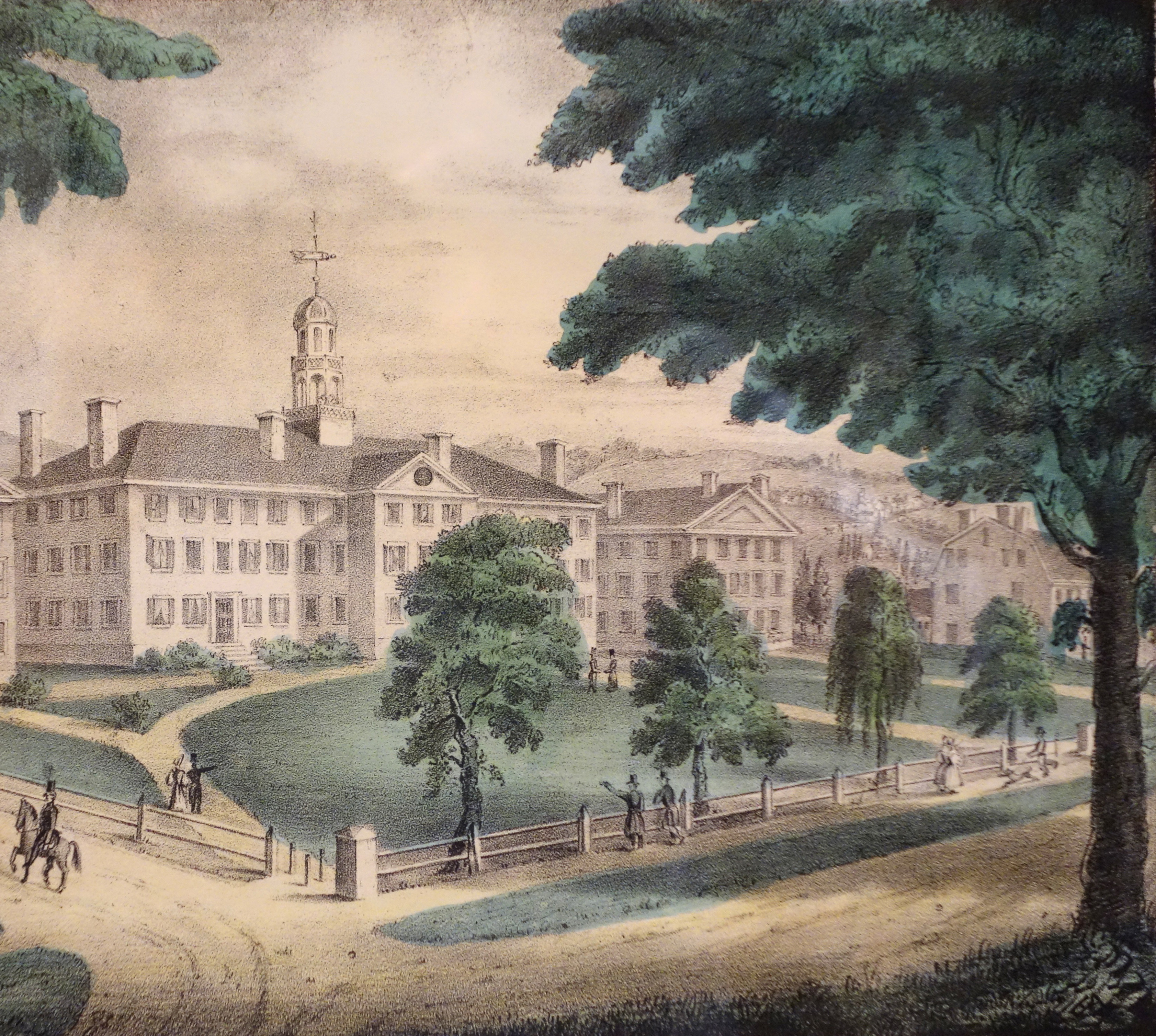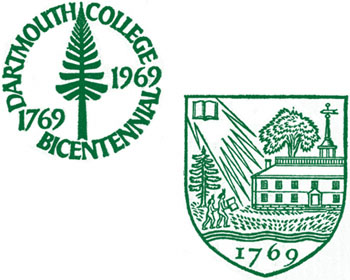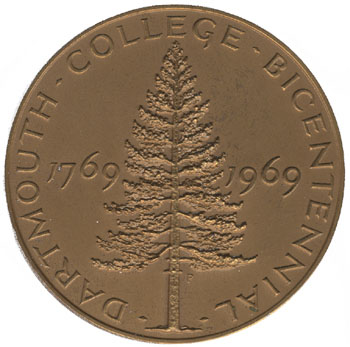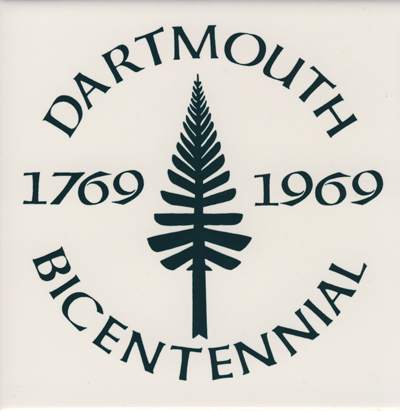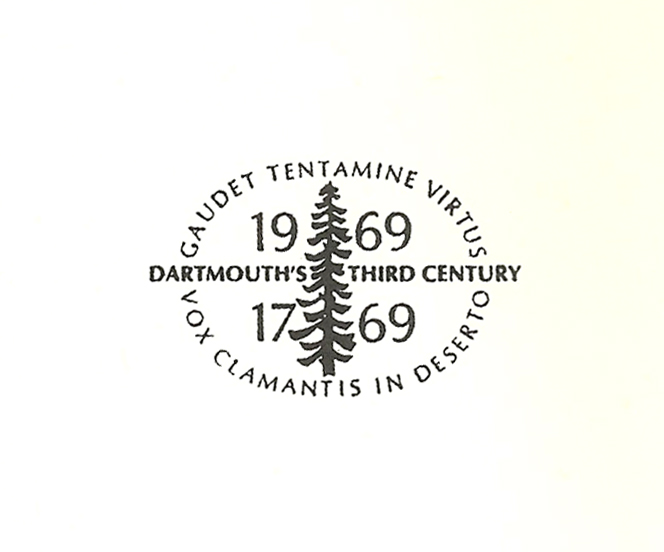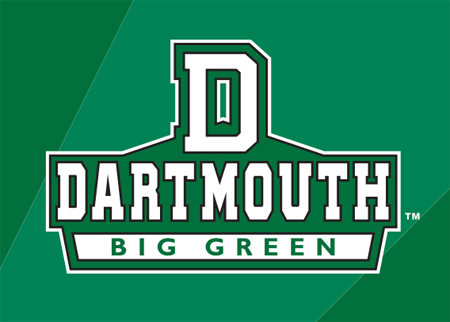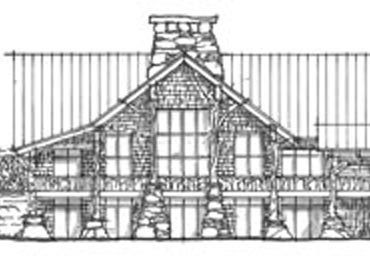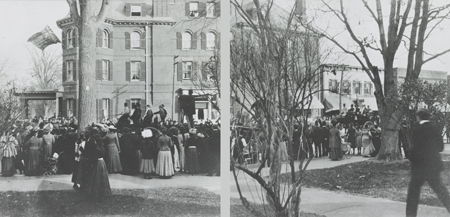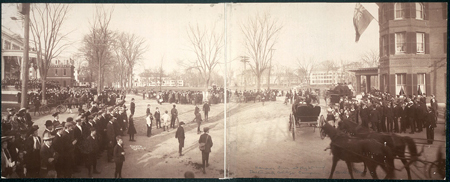Introduction
It is common for an academic institution to possess among its “crown jewels” a big ceremonial mace (Wikipedia) that is carried at the head of the Commencement procession and might rest in a special spot during the times when the board of trustees is in session. Dartmouth does not have a mace per se, but the College Usher leads the Commencement procession with Lord Dartmouth’s Cup (visible at the right side of this college Flickr photo), a tall 1848 silver vessel that certainly serves the purpose of a mace.
The mace in the U.S.
The college received the cup until 1969 and did not start using it in processions until 1983. Dartmouth does not seem to have had a mace before that time. Why not? It is not clear. It might be that the academic mace is mostly a recent phenomenon in this country. Here is a list of some notable North American college maces:
-
Yale (1902, by Tiffany & Co., with the presidents’ names engraved on the shaft; various colleges and schools possess their own later maces. The mace of the School of Public Health says “DISEASE PREVENTION”).
-
William & Mary (a 1923 gift to the state-run Normal School for white men, the mace featured a Confederate seal and battle flag).
-
Brown (1928).
-
Columbia (an unrelated 18th-century mace given in 1933).
-
Michigan (1952, incorporating building fragments; a mace of 1968 is now used).
-
Penn (1955).
-
Princeton (pdf) (1956, a gift of the locality).
-
University of Washington (1961).
-
Cornell (1962).
-
Gallaudet (1969, incorporating wood from three historic buildings).
-
UNLV (1970, surprisingly weird and excellent).
-
James Madison University (1979).
-
Thomas Jefferson University (1986, featuring the school’s winged ox).
-
Notre Dame (apparently ca. 1987).
-
U.Va. College at Wise (two maces, one given 1988 by The Poor Farm Society, apparently a sort of Seven Society at Wise).
-
University of Alabama at Birmingham (1989, reminds one of Barad-dûr).
-
University of Wisconsin-Green Bay (2001, with successive chancellors adding their signatures to a document stored in the handle).
-
New Mexico State University (pre-2005, incorporates a part of a building that burned in 1910 and is topped with a metal representation of a cactus flower).
-
Michigan State (2005).
-
UBC Okanagon (2009, taking the shape of a Native paddle).
-
University of Miami (1986, donated 2010).
-
University of Missouri (2014).
-
Bob Jones University (2014, incorporating a walking stick given to a past president).
A future mace
It would not be surprising if some alumnus or organization were to come up with the idea of presenting the college with a mace on the occasion of its 250th anniversary in 2019. (That time is not too far off: the 250th anniversary class is already in college.) The mace would not only commemorate the granting of the charter but also would symbolize the independence of the institution from the state, with 2019 being the bicentennial of the Dartmouth College Case.
At best, this old-style mace would be fashioned by New England craftspeople, but it need not follow the traditional mace form. Why not have it refer to a Cabin & Trail splitting maul; a woodsman’s cant hook or peavey; a Mountaineering Club ice axe; or an Organic Farm timber-framer’s mallet?
Perhaps the mace could encapsulate within it some historic implement, such as a cane or cane-head that belonged to Daniel Webster; a nineteenth-century axe used in the Second College Grant; a Boston Post Cane from a defunct New Hampshire town with some connection to the college; an ice axe used on a Himalayan expedition during the 1960s; a broom handle used by John Kemeny to prop open the cabinet of an overheating computer; or a hatchet that Robert Frost used in his woodlot. What about a nineteenth-century canoe paddle?
Any of these venerable tools would be sheathed in a protective silver capsule before being gilded, covered in worked sheets of precious metals, engraved, and decorated with jewels. The encrusting might include polished fragments of the Old Pine, the granite front step of Dartmouth Hall, or a piece of wood or stone from the original building of Moor’s Charity School in Connecticut. Parts of the weathered head and handle of the enclosed cane or axe might be left uncovered, and other parts, perhaps the sharp ones, might be made visible through small crystal windows.
So that a person would be available to carry this new ceremonial mace, the board might have to create the office of Quartomillenial Beadle or Semiquincentennial Macebearer.
[Update 12.06.2015: Three broken links fixed.]
——–
